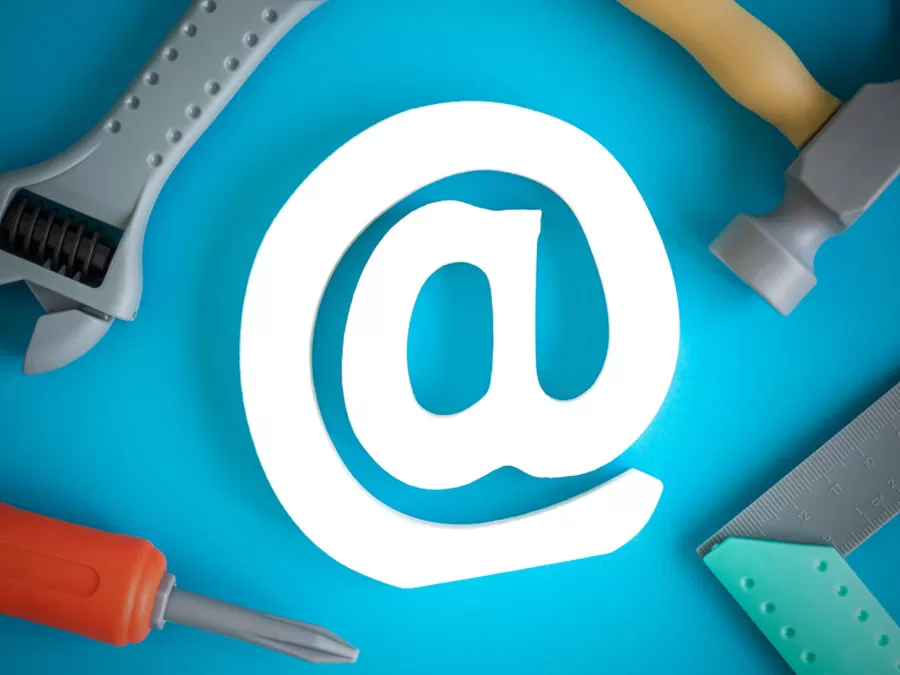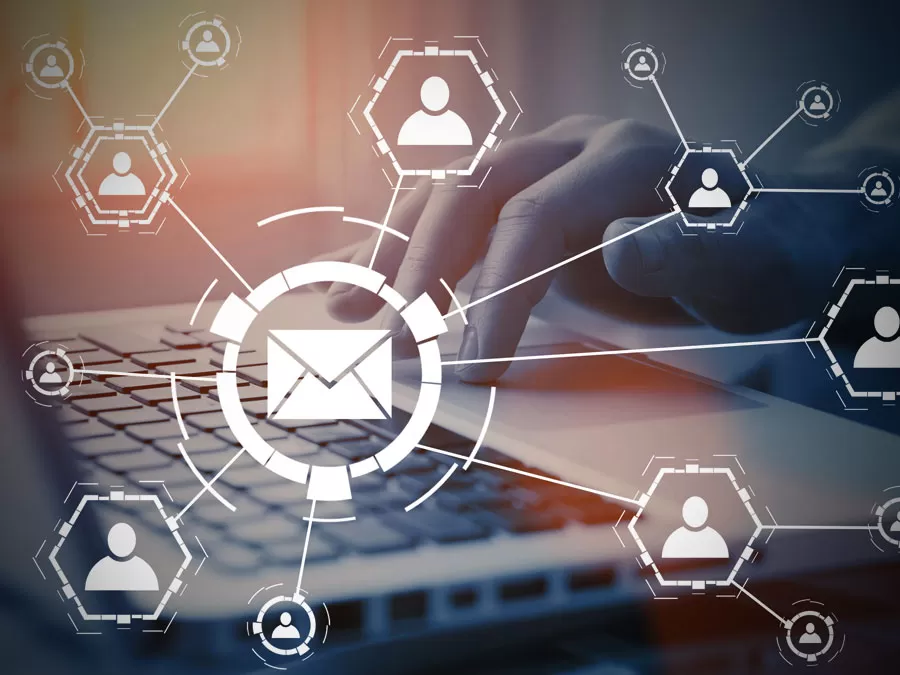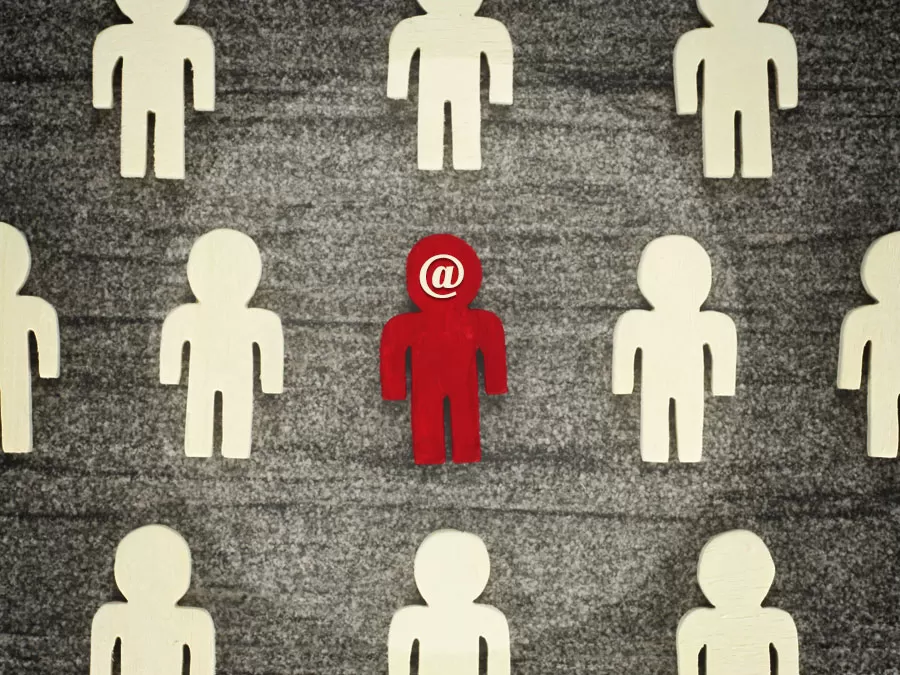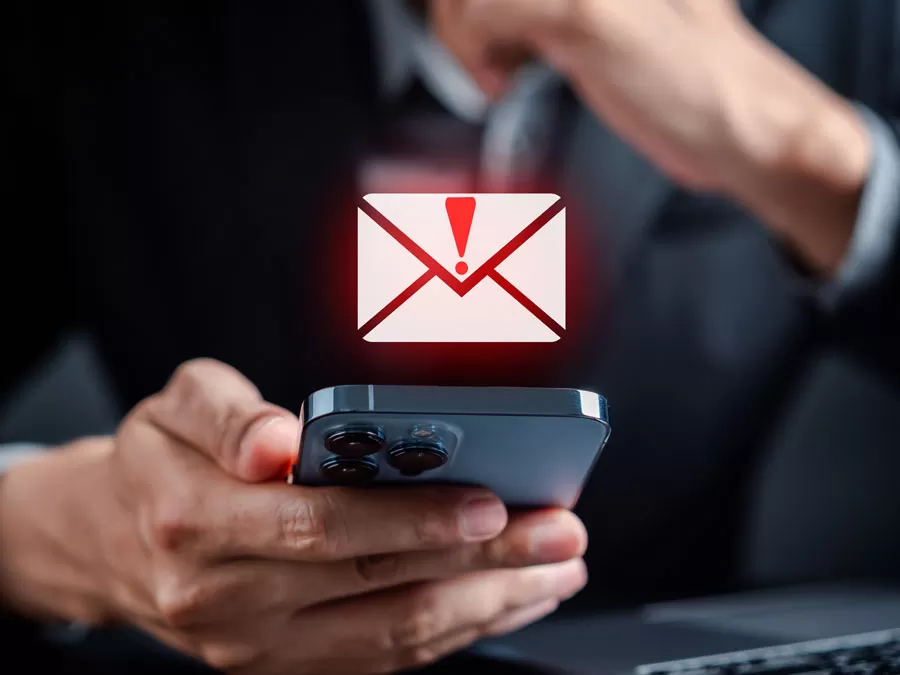Despite the boom of social media, email remains an integral part of the multichannel customer service strategy. Your customer experience (CX) strategy won’t be complete without customer service emails.
The phone (and other voice-based messaging channels) is still considered the most important customer support channel today. Customers value its accessibility, highlighting real-time support they can receive no matter when they need help.
On the other hand, Microsoft’s Global State of Customer Service states that email continues to be the second most favored CX channel. Here are the reasons why:
-
Convenience
Customers can send emails at any time, allowing them to seek assistance when it’s most convenient for them, without the need to wait on hold or adhere to specific operating hours.
-
Asynchronous Communication
Email allows for asynchronous communication, meaning customers and support agents can respond at their own pace. This flexibility suits individuals with busy schedules or those who prefer not to engage in real-time conversations.
-
Documentation
Email interactions create a written record of the communication. This documentation can be valuable for customers who may need to reference previous conversations, and it can also serve as a record for businesses to ensure consistency and accountability.
-
Efficiency
Support agents can manage multiple email inquiries simultaneously, making it a cost-effective and efficient way to address customer concerns.
-
Global Reach
Email transcends geographical boundaries, making it accessible to customers worldwide, which is especially important for businesses with an international customer base.
-
Privacy and Security
Email is perceived as a secure mode of communication, and customers often feel more comfortable sharing sensitive information via email compared to other channels.
-
Attachment Support
Customers can easily attach files, screenshots, or documents to illustrate their issues, providing a comprehensive context for support agents to resolve problems more effectively.
-
Personalization
Email allows for personalized responses, with agents addressing customers by name and tailoring their messages to the specific issue, which can enhance the overall customer experience.
-
Scalability
Email support can scale to accommodate both small and large customer bases, making it adaptable for businesses of various sizes.
Customer Service Email Writing Rules to Live By
A well-crafted email has the power to address customer concerns, provide timely solutions, and leave a lasting positive impression. Mastering the art of writing effective customer service emails plays a pivotal role in delivering exceptional customer experience.
Here are seven valuable tips to elevate your customer service email writing skills, ultimately enhancing the overall customer experience.
-
Understanding the Customer’s Perspective
Empathy lies at the core of effective customer service. To provide outstanding support, it is crucial to put yourself in your customer’s shoes and strive to understand their perspective. Take the time to actively listen to their concerns, frustrations, and needs. When crafting your email response, ensure that it reflects this understanding and empathy.
Tailor your customer service emails to address their specific pain points, demonstrating that you genuinely care about resolving their issue. By showing that you empathize with their situation, you build trust and foster a positive customer relationship.
-
Clear and Concise Communication
Customers appreciate clear and concise communication. The language you use in your customer service emails should be simple, straightforward, and easily understood. Avoid jargon or technical terms that may confuse or frustrate the customer. Break down complex information into digestible chunks, ensuring that your message is conveyed with utmost clarity.
Organize your email in a logical manner, using headings and bullet points to structure the content effectively. This helps the customer navigate through the email effortlessly and grasp the key information they need. Remember, a clear and concise email not only saves your customer’s time but also portrays your professionalism and commitment to excellent customer service.
-
Personalization and Warmth
Adding a personal touch to your customer service emails can make a significant difference in building rapport and establishing a positive connection with your customers. Address the customer by their name, as it creates a sense of familiarity and recognition.
Personalize your customer service emails by referencing their specific inquiry or concern, showing that you have taken the time to understand their unique situation. Moreover, using a friendly and warm tone throughout the email conveys your genuine interest in assisting them. By infusing your emails with personalization and warmth, you make your customers feel valued and appreciated.
-
Timeliness and Responsiveness
Timeliness is a crucial aspect of exceptional customer service. When customers reach out to you via email, they expect a prompt response. Aim to reply to customer emails within 24 hours, if not sooner. If you cannot provide an immediate resolution, acknowledge their email promptly and set realistic expectations for a response or resolution time.
This transparency reassures the customer that their issue is being addressed and keeps them informed. Throughout the process, maintain open lines of communication, providing updates or progress reports as necessary. By being timely and responsive, you demonstrate your dedication to customer satisfaction and build trust in your brand.
-
Providing Clear Solutions and Next Steps
Customers seek resolutions when they contact customer service, and it is crucial to provide them with clear solutions and actionable next steps. When addressing concerns, be concise yet thorough in your customer service emails. Clearly identify the issue they are facing and outline the steps they can take to resolve it.
If additional assistance is required, break down the process into step-by-step instructions to guide the customer through the necessary actions. By providing clear solutions and next steps, you empower your customers to take control of the situation, fostering a sense of confidence and trust in your support.
-
Grammar and Spelling Accuracy
The importance of grammar and spelling accuracy cannot be overstated in customer service emails. Your emails are a reflection of your professionalism and attention to detail. Always proofread your emails before sending them to ensure accuracy and clarity. Correct any grammatical or spelling errors that may undermine your credibility.
Use professional language and avoid slang or abbreviations that may confuse the customer. Ensure that your email content is coherent, well-structured, and grammatically sound. By taking the time to ensure grammar and spelling accuracy, you present yourself as a competent and reliable business owner who values effective communication in your customer service emails.
-
Closing on a Positive Note
The way you conclude your customer service emails can leave a lasting impression on your customers. Ensure that you close on a positive and uplifting note. Express gratitude and appreciation for the customer’s patience, understanding, or feedback. Let them know that you genuinely value their business and the opportunity to assist them.
Offer your assistance for any future inquiries or concerns they may have, reinforcing your commitment to ongoing support. Include your contact information in your customer service emails, such as phone number or email address, to encourage further communication. By ending on a positive note, you leave a favorable impression and build customer loyalty.
What to Avoid When Writing a Customer Service Email
Writing customer service emails requires finesse and attention to detail as it directly reflects your business’s professionalism and commitment to customer satisfaction.
To ensure your customer service emails are effective and leave a positive impression, it is crucial to be mindful of potential pitfalls. Here are some common mistakes to avoid when writing a customer service email:
-
Impersonal Greetings
Starting an email with a generic greeting like “Dear Customer” or “To Whom It May Concern” can come across as cold and unengaging. Instead, address the customer by their name for a more personalized touch, showing that you value them as an individual.
-
Long and Complex Sentences
Overly long and convoluted sentences can confuse the customer and make your email harder to read. Opt for shorter, straightforward sentences to ensure clarity and improve the overall readability of your message.
-
Using Jargon or Technical Language
Avoid using industry-specific jargon or technical terms that might not be familiar to the customer. Communicate in simple, layman’s terms to ensure that your message is easily understood by all recipients.
-
Ignoring the Customer’s Concern
Failing to address the customer’s specific concern or question is a major misstep. Always ensure that your response directly relates to the issue they raised, demonstrating that you genuinely care about resolving their problem.
-
Copying and Pasting Generic Responses
Sending the same generic response to multiple customers can make them feel undervalued and unimportant. Customize each email based on the customer’s inquiry or situation to show that you are actively engaging with them.
-
Being Defensive or Argumentative
Sometimes, customers may express frustration or dissatisfaction. Avoid becoming defensive or arguing with them in your email. Instead, respond with empathy and a willingness to find a solution that addresses their concerns.
-
Neglecting to Proofread
Typos, grammatical errors, and spelling mistakes can undermine your professionalism and credibility. Always proofread your emails before sending them to ensure they are error-free.
-
Providing Vague or Incomplete Information
Be clear and comprehensive in your responses. Avoid vague or incomplete answers that may leave the customer more confused or frustrated than before.
-
Delaying Response Times
Timeliness is crucial in customer service. Avoid prolonged response times, as it may lead to customer dissatisfaction. Aim to reply to emails promptly, ideally within 24 hours.
-
Overusing Canned Responses
While templates can be helpful for certain situations, relying too heavily on canned responses can make your emails sound robotic and insincere. Use templates as a starting point and customize each response to address the customer’s unique needs.
-
Not Expressing Gratitude
Failing to express gratitude to the customer for their business or feedback can come across as unappreciative. Always acknowledge and thank them for reaching out to your business.
-
Making Promises You Can’t Keep
Be cautious about making promises you may not be able to fulfill. If you cannot provide an immediate resolution, be honest and transparent about the timeline for a solution.
-
Ignoring Emotional Language
Customers may express emotions in their emails, such as frustration or disappointment. Acknowledge their feelings and respond with empathy, showing that you understand their perspective.
-
Leaving Out Contact Information
Ensure that your email includes your contact information, such as your name, email address, and phone number. This allows the customer to reach out to you directly if needed.


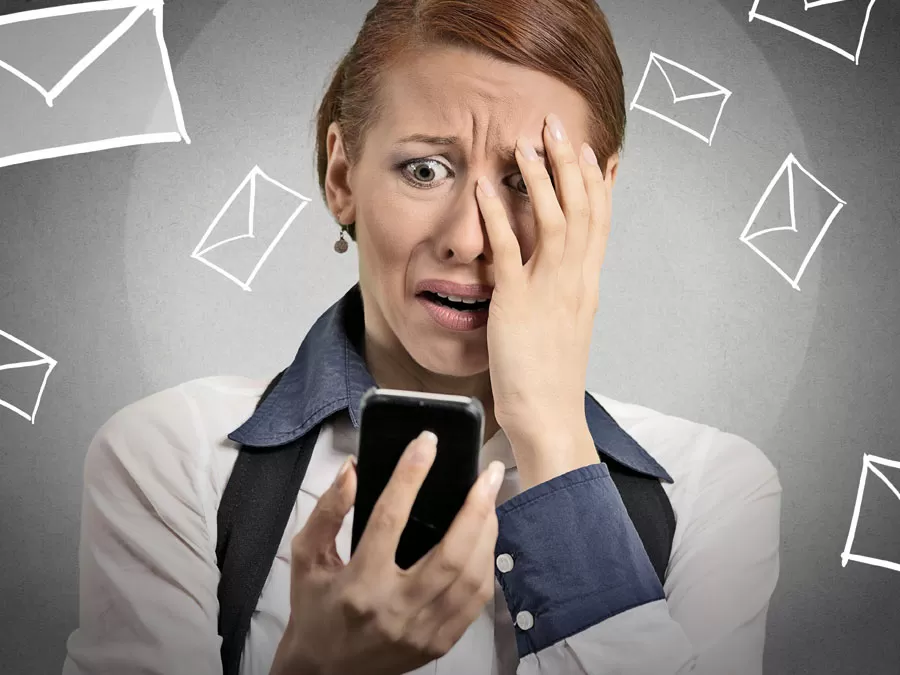
Avoiding these common mistakes when writing customer service emails will help you maintain a professional and customer-centric approach. By providing personalized, clear, and empathetic responses, you can enhance the overall customer experience and strengthen your business’s reputation for exceptional customer service.
Remember to proofread your customer service emails, address the customer’s specific concerns, and always express gratitude for their engagement with your business.
How Outsourcing to a Multichannel Firm Can Help
Outsourcing customer service to a multichannel firm can bring numerous benefits to your business, especially when it comes to reaching out to customers via email. In today’s fast-paced business environment, providing exceptional customer service is a top priority.
Outsourcing customer service operations allows you to tap into specialized expertise and resources, providing a seamless and efficient customer experience. Let’s explore how outsourcing to a multichannel firm can specifically benefit your business in the realm of email customer service.
First and foremost, outsourcing to a multichannel firm provides access to a dedicated team of professionals who are skilled in handling customer inquiries and concerns via email. These professionals are trained to understand customer needs, empathize with their situations, and provide prompt and accurate responses.
By outsourcing, you can ensure that your customers receive timely and well-crafted email responses, even during high-volume periods or outside of your regular business hours. This level of responsiveness enhances customer satisfaction and builds trust in your brand.
Furthermore, multichannel firms often have advanced customer service technology and systems in place to manage customer service emails effectively. These tools streamline the email handling process, ensuring that emails are efficiently categorized, assigned, and tracked.
With access to such technology, the outsourced team can handle a large volume of customer emails while maintaining quality and consistency in their responses. This scalability allows your business to effectively manage peaks in email traffic and accommodate growth without compromising customer service quality.
Outsourcing customer service email operations also allows you to leverage multichannel firms’ expertise in managing email workflows. They have established protocols for handling different types of customer inquiries, ensuring that each email is handled appropriately and efficiently.
From initial acknowledgment to resolution and follow-up, the outsourced team can adhere to best practices, ensuring consistent and effective communication with your customers. This level of professionalism enhances your brand image and strengthens customer loyalty.
Another significant advantage of outsourcing email customer service is the potential for cost savings. By outsourcing, you can avoid the costs associated with hiring, training, and managing an in-house customer service team. Multichannel firms typically operate on a pay-as-you-go or subscription basis, allowing you to control costs based on your business needs.
Additionally, outsourcing eliminates the need to invest in customer service technology infrastructure and ongoing maintenance. These cost savings can be allocated to other areas of your business, enabling you to optimize resources and focus on core competencies.
Outsourcing customer service email operations also provides your business with flexibility and scalability. As your business grows or experiences fluctuations in email volume, the outsourced team can quickly adapt to accommodate changing demands.
Multichannel firms often have the capability to seamlessly handle emails across different time zones, ensuring 24/7 support for your customers. This flexibility allows you to expand your customer base and enter new markets with confidence, knowing that your email customer service is in capable hands.
In addition to the operational benefits, outsourcing customer service email operations can provide valuable insights and analytics. Multichannel firms typically track and analyze customer interactions, allowing you to gain valuable data on customer preferences, trends, and pain points.
These insights can help you make data-driven decisions, improve your products or services, and enhance the overall customer experience. By leveraging the expertise of the outsourced team and the data they generate, you can continuously optimize your strategy for customer service emails.
Mastering the art of writing effective customer service emails is essential for delivering exceptional support and enhancing the overall customer experience.
By implementing these seven tips—understanding the customer’s perspective, communicating clearly and concisely, personalizing your emails, being timely and responsive, providing clear solutions and next steps, ensuring grammar and spelling accuracy, and closing on a positive note—you will transform your skills in writing customer service emails.
Remember, continuous improvement and adaptability to changing customer needs are key. By providing top-notch support through well-crafted customer service emails, you strengthen customer relationships, boost satisfaction, and position your business as a paragon of excellent customer service.
To provide effective email support, brands must employ skilled and experienced multilingual agents. Great communication skills and product knowledge propel any brand utilizing this customer support channel. Let Open Access BPO know what your brand needs and we’ll provide you with a multilingual email support team that’s sure to strengthen your customer experience strategy.
Despite the boom of social media, email remains an integral part of the multichannel customer service strategy.
Email is a big hit among the 55-and-above age bracket, naming it their preferred method of engaging with brands.
Both millennials and Gen Z also love email, making it their most-used touchpoint.
As such, your online customer care strategy won’t be complete without email. Using it as a customer support tool will let you reach a bigger demographic.
However, delivering customer service through this touchpoint can be tricky. For a better customer experience, you need to make sure that your messages are easy to digest and straight to the point. So for effective communication via email, practice these seven tips!
-
Always use the customer’s name
You can’t go wrong with enthusiastic greetings as well. Cheery hellos can lighten up the atmosphere and improve the tone of the conversation. Too many emails sound robotic and impersonal, and customers are tired of getting them. Addressing customers by their first name shows that you’re paying attention to them.
-
Introduce yourself
When customers contact you, they expect to talk to a real, breathing human, not a bot. All your call center agents should thus make it a habit to introduce themselves to customers. This makes interactions more personal. Instead of a transaction between a customer and a brand, the interaction then becomes a conversation between two people.
-
Simplify explanations
Depending on the customer’s issue, your customer service email may contain technical concepts. The golden rule is you have to make everything easy for the customer to understand.
There are plenty of ways to do that, including these:
-
- Use short sentences.
- Don’t fit two or more ideas in one long statement. Explain them one by one.
- Avoid jargon.
- Use illustrations, graphics, and other media.
-
-
For longer instructions, use links
When customers receive an email, they’ll probably spend just a few seconds scanning it. Your best bet, therefore, is to make the email as short as possible. However, don’t compromise problem resolution just because the procedures involved are too complex.
If it’s impossible to shorten long instructions, use links to direct the customer to an external resource material. You may point them to a video tutorial or a self-service portal.
Or better yet, you may transfer the conversation to another channel such as the phone.
-
Use a conversational tone
Sincere apologies (e.g., “We sincerely apologize for this inconvenience.”) work better than casual ones (e.g., “Sorry! “). Generally, customers of all ages and genders like call center agents who use conversational but polite language. It makes the customer service interaction seem more relaxed. However, there are exceptions:
- When denying a request, avoid using a casual tone
- When delivering good news, customers prefer a more informal tone
-
Avoid weak and vague phrases
For clear and effective communication, do away with weak phrases. These are common expressions that don’t add any value or meaning to a statement or those with a negative connotation.
-
Keep customers posted on updates
Although customers don’t expect an instant reply upon sending an email, they’d want you to keep them updated about the progress of their requests. Tell them specifically when they can expect results and promise to get back to them at a particular time. Just make sure to stick to the schedule.
To provide effective email support, brands must employ skilled and experienced multilingual agents. Great communication skills and product knowledge propel any brand utilizing this customer support channel. Let us know what your brand needs and we’ll provide you with a multilingual email support team that’s sure to strengthen your customer experience strategy.


